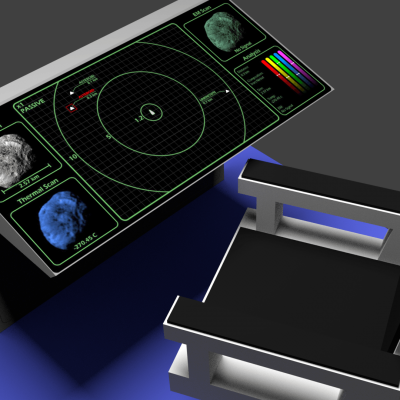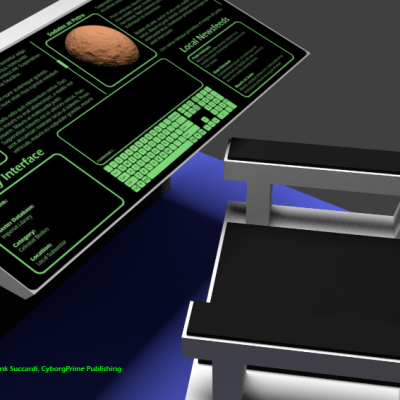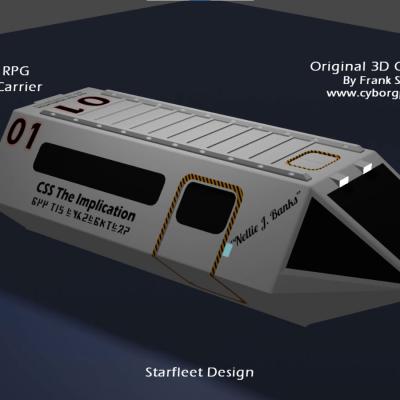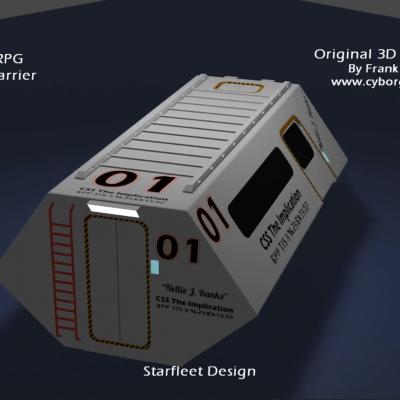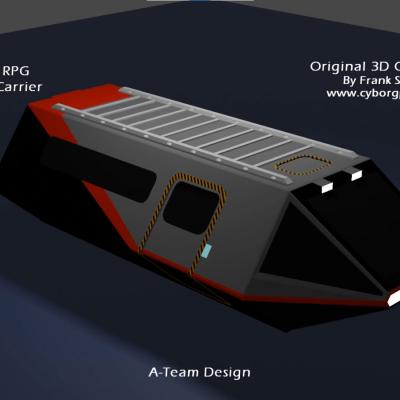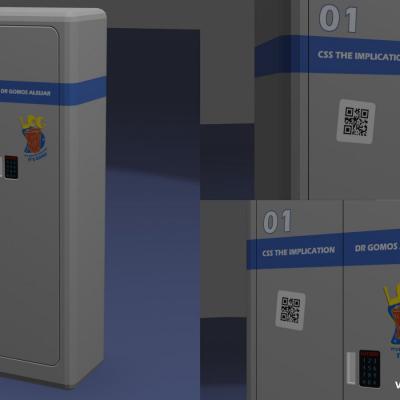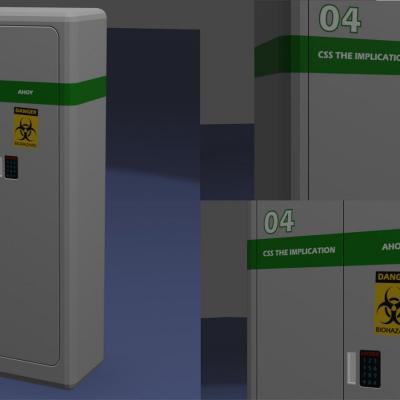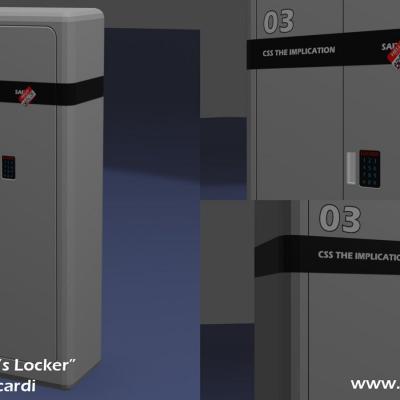Do you want to write great Traveller adventures? Try traditional story structures. This article covers how to use Joseph Campbell's Hero's Journey framework to create compelling and memorable Traveller adventures.
What is the Hero's Journey Theory?
The Hero's Journey is a story structure established by Joseph Campbell who noticed a universal storytelling archetype present throughout the adventure stories and legends of the different cultures of the world.
Campbell created a 12-point story structure that you can use as a framework for making compelling and memorable stories for your Traveller games.
By following this 12-step process, you can develop a great story with a structure that is recognized by every culture in the world. Your story will have highs and lows, companions and teachers, and will follow an epic path of adventure.
Of course, players have a way of taking things off in a way you may not expect, but by outlining the overall story, you make sure you cover at least the basic information and story structure players expect. You can do a certain amount of shuffling or modification to the story along the way without the players even noticing.
 |
Why Use the Hero's Journey?
The Hero’s Journey is a bit more granular than the three-act story structure.
In the Hero’s Journey, there are 12 distinct plot beats instead of 9.
This allows you to keep a tighter storyline, as there is less space between steps to veer off course.
It makes your story instantly recognizable on a very subconscious level since the monomyth is a cross-cultural, ancient storytelling tradition, suitable for transmitting by word of mouth.
How to Write a Hero's Journey Story
I usually start by writing up a summary of the story I have in my head.
I then go to my list of the twelve stages of the hero’s journey and I rearrange my summary to make sure I tick off all the boxes required for the hero’s journey.
If I forgot a step in my summary, I just go ahead and find a way to add it in. I make sure there are strong links between the required steps.
I make the twelve steps very obvious when they happen in the story. Once you’ve made them obvious, you can adjust them down to make them more subtle to the audience if you wish.
Once you have all the 12 stages represented, rewrite your summary. This will give you a roadmap, and an overview of the story.
Now you are ready to flesh out the details. You can start with the summary and begin building out some details of your story by developing a backstory for the various characters that will become your NPCs and locations that will become your scenes.
You are now ready to fill in the details through roleplaying with your group.
The Hero's Journey 12 Steps
Joseph Campbell discovered the 12 stages of the monomyth: a universal, ancient, cross-cultural storytelling method.
Mr. Campbell distilled these 12 stages from the heroic journey myths of the world:
- The Ordinary World
- The Call to Adventure
- Refusing the Call
- Meeting the Mentor
- Crossing the First Threshold
- Tests, Allies, and Enemies
- The Innermost Cave
- The Ordeal
- The Reward
- The Road Back
- Resurrection
- Return with the Elixir
Let’s have a look at each of the 12 steps of the Hero’s Journey in detail.
Steps of the Hero's Journey Explained
The myths of the world have twelve stages in common. Every adventure follows this framework and is cyclical. Once the hero has gone off on an adventure and successfully returned, they are ready to take on a new adventure someday.
Here are the 12 stages of the hero’s journey with brief explanations and a familiar example for each stage:
#1- The Ordinary World
This is the original, normal world of the hero. The hero is restless, there is something they want but can’t achieve. Something is deficient, either actual or symbolic, that is driving the hero’s restlessness.
In Star Wars- A New Hope, Luke is a moisture farmer who wishes he could fly off-world with his friends and join the Academy. Unfortunately, Luke’s uncle needs him for the harvest and asks him to put off his plans for a season.
#2- The Call to Adventure
The hero receives a call to adventure. They are given a challenge to overcome, a problem to solve, or a quest to complete.
Luke finds a strange message embedded in R2D2’s hologram matrix, “Help me Obi-Wan Kenobi, you’re my only hope!”
#3- Refusing the Call
The hero refuses the call to adventure. They have obligations, personal shortcomings, doubt, or feel too weak to face the complications involved with an adventure.
Luke seeks out Obi-Wan but refuses his invitation to travel to Alderaan and learn about the force.
#4- Meeting the Mentor
The hero meets a teacher or mentor. This mentor teaches the hero and prepares them for their journey. In addition to advice and guidance, the teacher often gives the hero a gift or an object to help them in their journey. The mentor can help the hero, but cannot join them on the journey.
Luke learns about the Force and the Jedis from Obi-Wan. Obi-Wan gives him a lightsaber and invites Luke to join him on the trip to Alderaan.
#5- Crossing the First Threshold
The hero is committed to taking on the adventure. There is no turning back. The hero leaves the normal world behind and enters the special world. Sometimes there is a guardian at the threshold and the hero must prove his worthiness to cross.
The murder of Luke’s Aunt and Uncle drive him to leave Tatooine behind and go off with Obi-Wan. They travel to the spaceport, which is unfamiliar to Luke the simple farm boy. They hire Han Solo to take them to Alderaan. There’s no turning back for Luke; he has crossed the first threshold.
#6- Tests, Allies, and Enemies
The hero learns how to get along in the special world. He learns the rules of the special world by meeting new people and obtaining information along the way. He uses what he has learned so far to operate within the special world.
Luke’s friends help him escape Tatooine. Luke learns about the Force from Obi-Wan on the trip to Alderaan.
#7- Innermost Cave
This is the place that contains what the hero has been after. It is a place of conflict, uncertainty, and (apparently) insurmountable danger.
Luke and his friends find Alderaan has been destroyed and they are captured by the Death Star.
#8- Ordeal
The hero endures a great hardship but learns to work within the parameters of the special world. The hero overcomes the ordeal but it costs him something.
Luke and his allies face many ordeals aboard the Death Star. They rescue the princess, get crushed in a compactor, get stuck on a bridge, and have gunfights in the corridors of the Death Star. They lose Obi-Wan but they get the Princess and escape.
#9- Reward
After surviving the ordeal, the hero takes the treasure, object, weapon, or knowledge.
Luke rescues Leia, escapes from the Death Star, and joins the Rebel forces, becoming a star pilot after all. He gets his fondest wish.
#10- The Road Back
This is the hero’s journey back to the normal world from the special world. They may be pursued.
Luke joins the rebellion and volunteers as a fighter pilot. He will return to the Death Star, this time to help destroy it. He turns down Han’s offer to leave and joins the attack on the Death Star. He is pursued by enemy TIE fighters during the attack on the exhaust port.
#11- Resurrection
There is one last test signaling the rebirth of the hero.
Luke sheds his ego, turns off the targeting computer, and uses the Force to drop the torpedoes on the target. He has transformed from a simple farm boy who never heard of the force into a hero who used the Force to destroy the Death Star.
#12- Return with the Elixir
The hero returns triumphant from his trials and tribulations. He brings back a special “elixir” that may take the form of prestige, freedom, wisdom, treasure, love, or knowledge.
The battle is won! Luke has been transformed from a simple farm boy into a hero who learned to use the Force to strike a huge blow against the empire. He is recognized as a hero at a grand awards ceremony and returns to his life with a knowledge of the Force and newly-acquired prestige.
The 12 Steps of the Hero's Journey, Traveller Style
Now that you know the 12 stages of the Hero’s Journey, how can you apply this to your Traveller Adventures?
Let’s take a look at each of the 12 steps and discuss them in the context of the Traveller RPG.
Stage 1- The Ordinary World
Begin by establishing the ordinary world of the player-characters (PCs) in your Traveller game.
What are some things a PC in your Traveller universe might do as part of their boring, day-to-day routine to get by in the world?
Are the PCs:
- Toiling on the family farm?
- Prisoners at a work camp?
- The crew of a ship trying to scratch together enough money to pay the bills?
- Prospectors on a nearly dried-up claim?
- Test subjects in some kind of experiment?
- Restless nobles having to attend ANOTHER boring ceremony?
- Paper-pushers in a bureaucracy?
- Ship crew with nothing much going on besides routine maintenance on the ship.
- Performing routine survey scans on a newly-discovered planet?
You can improvise on this a bit and save yourself some work by asking the players what they are up to between adventures.
Ask them each what their character spends their time doing. Let the player establish their view of their character’s Normal World. This helps build player agency in the story right away.
Alternately, you can just tell the players where they are and what they are doing and let them go from there.
For example, “You are prisoners in a chain gang breaking rocks in the hot sun all day. Blisters and calluses cover your hands. Your neck and arms are badly sunburned. Taken from your cell each morning, you toil in the sun all day under the watchful eye of the prison guards, with only a short break for a lunch of bread and water. At the end of the day, guards herd you back to your cell. You do it all again the next day.”
Stage 2- The Call to Adventure
Of course, we are here to have adventures, so the characters should receive a call to adventure.
This could be a literal call to adventure, or it could be a metaphorical call.
Here are some examples of how the call to adventure might come:
- The PCs could be invited to come along on an adventure with friends.
- The PCs could be presented with a once-in-a-lifetime opportunity.
- Somebody wants to hire the PCs to do a discreet job.
- The PCs receive a distress call coming from inside a nebula.
- Captured, the PCs see an opportunity to escape.
- They get a phone call where a mysterious voice informs them about an adventure.
- A family member calls on the PCs for help with a seemingly impossible task.
- The PC's ship has a misjump or is knocked off course.
- The PCs receive an invitation to a royal ceremony by an influential Noble House.
- A research facility calls upon the PCs for their expertise in a subject.
- The PCs get a cargo or passenger job that seems super easy, pays a bit more than usual, or for some other reason seems too good to be true.
The call to adventure could be a mission given to the characters by their superiors, or a job they are looking to score.
Stage 3- Refusing the Call
Initially, the PCs might refuse the Call to Adventure. Why would they do such a thing?
Each player may have their reasons. Allow them to come up with their reasons through role-playing.
If the players can’t come up with good reasons, here are some to think about:
- The adventure seems impractical to undertake at the time; doesn’t pay enough, is too far away, can’t get it done in time, can’t be prepared to undertake in time, etc.
- The characters don’t have the resources or training to undertake the adventure.
- The reward for completing the adventure seems a little slim.
- The characters have previous commitments that conflict with the timetable of the adventure.
- The characters have a social conflict; if they take the job, it might anger somebody powerful.
- The characters have duties; their work or home life depends on them sticking around.
- The PCs might be too scared to take on the adventure. Maybe it could threaten their lives or livelihood.
- Taking the adventure might negatively affect their social status.
- Seems like a hassle or maybe just too dangerous.
- The adventure might cross the law or local authorities.
- The cargo is dangerous to transport.
The PCs find it inconvenient to take on the adventure, and maybe wait for something better to come along.
Stage 4- Meeting the Mentor
The PCs meet somebody who teaches them more about the details of the adventure and tries to convince them to go on the adventure. The mentor gives them gifts, such as equipment, knowledge, gear, weapons, or resources to help them complete their mission.
Some example mentors the PCs might meet:
- A wise old hermit who lives in the desert.
- A martial arts teacher.
- An oracle in a hard-to-reach place.
- A weapons expert.
- A hacker from the “real world”.
- A subject matter expert on any topic relevant to the Special World.
- A diplomat, or ambassador from the Special World.
Stage 5- Crossing the First Threshold
The PCs have committed to taking on the adventure; there is no turning back. They are leaving the ordinary world behind and crossing into the special world.
They may be pursued, or an attempt may be made to keep them from leaving. Something may be guarding the First Threshold.
- The PCs escape the starport with the Space Mafia on their tail.
- The PCs manage to launch with the local police in pursuit.
- On their way to the jump point, pirates attack them.
- A major malfunction leaves the ship temporarily dead in space and must be repaired
- The customs paperwork the PCs filed months ago has stalled in the bureaucracy.
- The PCs need a special access code to pass the First Threshold
- The PCs need to cross a hazardous “landscape”.
Stage 6- Tests, Allies, and Enemies
The PCs meet allies along the way. They are tested and build camaraderie while joining together against the enemy in limited victories.
Some ideas for allies:
- The allies are contacts the PCs already know.
- The allies are hired by the PCs.
- The allies are people the PCs just met.
- The allies’ interests are aligned with the PCs.
Some ideas for tests:
- The PCs complete a challenging ceremony.
- The PCs rescue their friends.
- The PCs free the captives.
- The PCs destroy enemy resources (money, fuel, weapons, etc).
- The PCs steal something from the enemy.
- The PCs strike a blow against the enemy forces.
- The PCs win a fight that is stacked against them.
Some ideas for enemies:
- The enemy is a rival of the PCs.
- The enemy is much more powerful than the PCs.
- The enemy is somebody who wishes to destroy or enslave the PCs.
- The enemy is a former friend/ally.
- The enemy is a military force.
- The enemy is a corrupt authority figure.
- The enemy is a corrupt institution or megacorporation.
Stage 7- The Innermost Cave
The PCs have traveled deep into the special world, they have come to a place where things can easily go wrong and fall apart.
Some ideas for the innermost cave:
- The PCs have penetrated far behind enemy lines and must fight their way out.
- The PCs are in deep cover and must take a chance that will blow their cover.
- The PCs are captured and need to escape.
- The PCs find where their allies are jailed.
- The PCs discover where something that has been stolen from them is kept.
Stage 8- The Ordeal
The PCs must prove themselves worthy of the reward through a series of trials that test them in various ways.
Some ideas for The Ordeal:
- The PCs must complete a ritual or ceremony to appease the elders
- The PCs must travel to a series of places to show they can navigate the special world.
- The PCs must fight waves of increasingly difficult enemies.
- The PCs must find their way through a labyrinth.
- The PCs must repair something that was thought to be unrepairable.
- The PCs must shut down or destroy a piece of equipment.
- The PCs rescue their friends or take back what was stolen.
Stage 9- The Reward
After overcoming The Ordeals, the PCs get to take what they came to get from the Special World.
Some ideas for The Reward:
- The PCs get what they came to the special world for.
- The PCs rescued their friends.
- The PCs freed the slaves.
- The PCs are accepted within a community.
- The PCs attain wealth, status, or security.
Stage 10- The Road Back
The PCs are pursued by agents of the defeated enemy, perhaps their minions or allies who want to stop the PCs from leaving the Special World with The Reward.
Ideas for The Road Back:
- The PCs are chased by the Captains of the Boss.
- The PCs are pursued by law enforcement authorities.
- The PCs are hounded by bounty hunters who attack by surprise.
- The PCs must escape the exploding and crumbling facility.
- Just when the PCs think it is safe to take a rest, bandits attack!
- Minions of the Big Boss try to steal back The Reward
- Allies of the Big Boss try to prevent the PCs from returning to the Ordinary World with The Reward.
The Road Back should be a harrowing experience for the PCs.
Stage 11- Resurrection
One last test signals the rebirth of the characters and mastery of the special world.
- The characters are transformed from destitute to wealthy.
- The characters are transformed from low social status to high social status.
- The characters are transformed from cowardly to heroic.
- The characters are transformed from faithless to faithful.
- The characters are transformed from crass to refined
- The characters are transformed from ignorant to enlightened.
- The characters are transformed from disrespected to honored.
The Resurrection could be metaphorical or symbolic. It doesn't have to be actual death, just shedding of the old life and the transition into the new one.
Stage 12- Return with the Elixir
The PCs return to the Ordinary World. They have traveled far from home, met allies and mentors, overcome hardship, and have been transformed into a new version of themselves.
Some ideas:
- There’s more than enough to pay the ship’s mortgage.
- The family farm is saved!
- The orphanage is saved!
- The scientific anomaly has been studied!
- The sensitive data has been recovered!
- The space fascists are defeated!
The return should feel satisfying to the players. All the toils, trials, hardships, and successes have brought them full circle. They have achieved what they set out to do and have been transformed by the journey.. the Hero's Journey!
Try It Yourself
Are you ready to write that next epic Traveller adventure for your players to enjoy? Give the Hero's Journey a try.
Using the Hero's Journey framework will make sure your story has ups and downs, tension and relief, and hits all the aspects people around the world expect from an adventure story.
What Do You Think?
Have you ever used the Hero's Journey in your adventures? Do you think it helped you create a better story? Why or why not?
Share your opinions in the Comments section - I'd love to hear how the Hero's Journey helped you improve your Traveller game.
E-mail Notification Opt-in
Do you want to receive email notifications when we post more tips for Traveller Referees and GMs?
Sign up on our private mailing list. We won't spam you or share your info. Unsubscribe at any time.
YES! Notify me of new GM Tips and Tricks!




